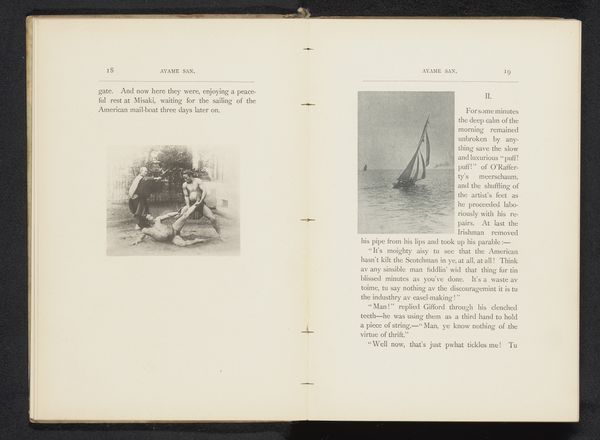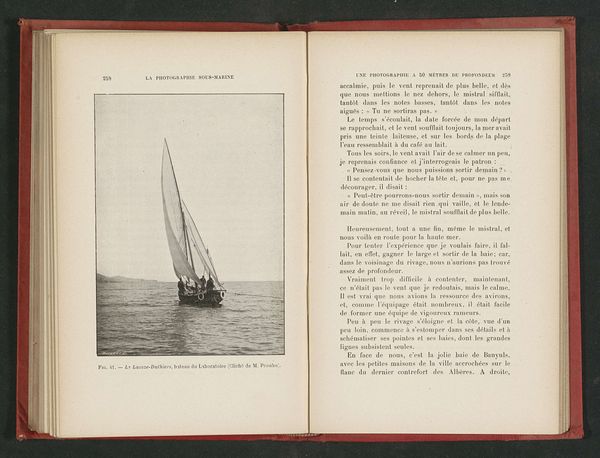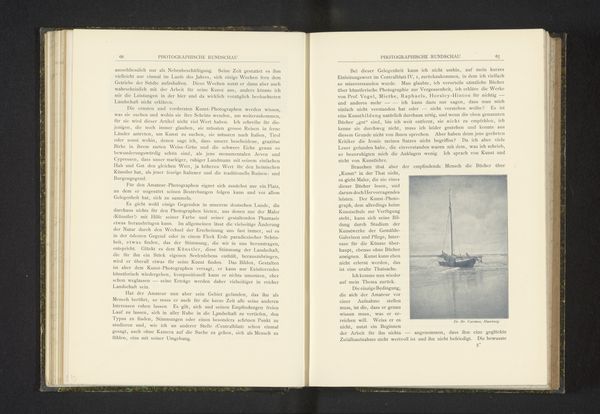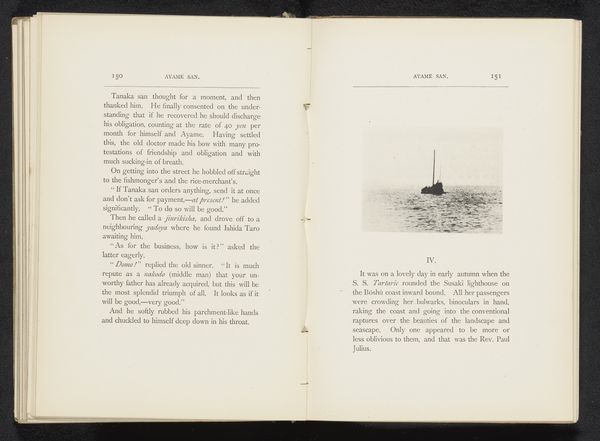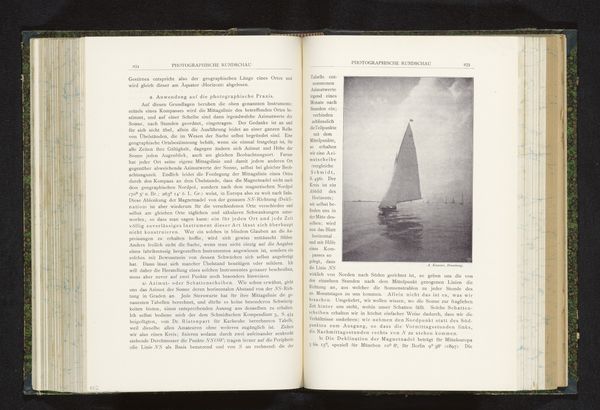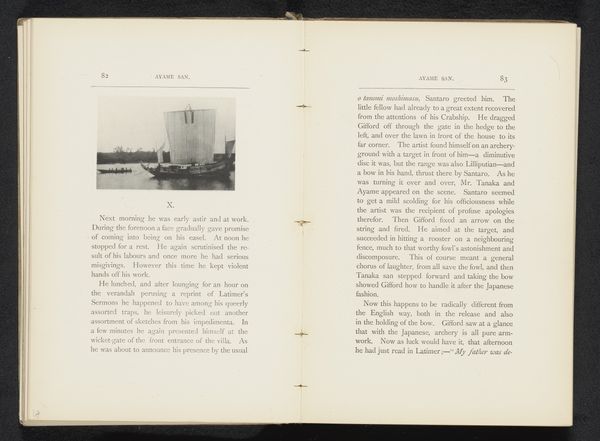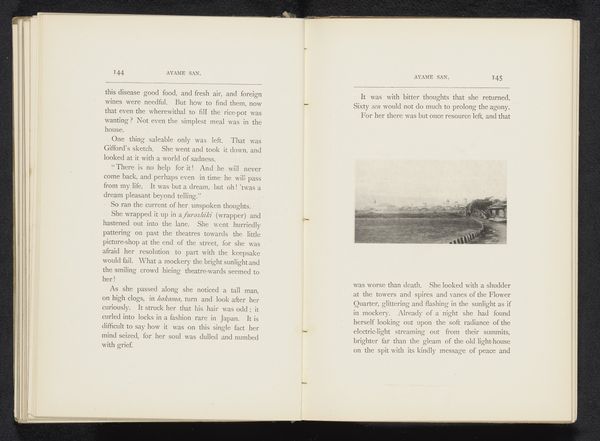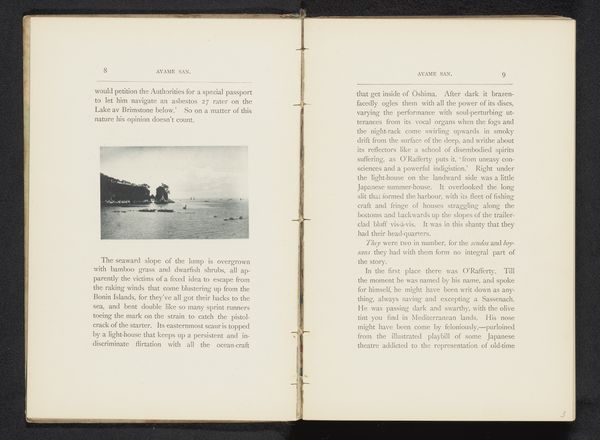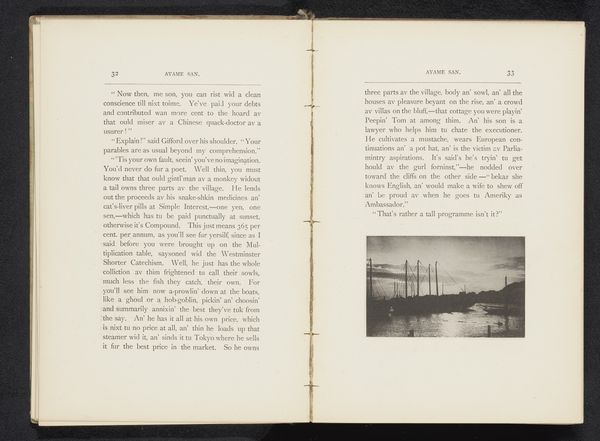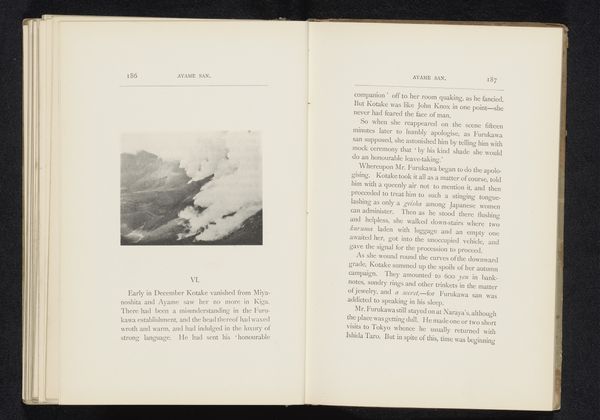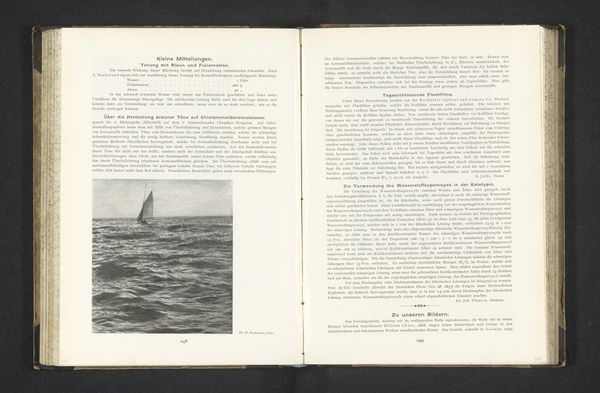
print, photography
#
aged paper
#
homemade paper
#
paperlike
# print
#
photography
#
thick font
#
publication mockup
#
handwritten font
#
classical type
#
thin font
#
historical font
#
small font
Dimensions: height 59 mm, width 80 mm
Copyright: Rijks Museum: Open Domain
Editor: Here we have "Zeilschip," a photographic print by William Kinnimond Burton, dating to before 1892. It depicts a sailboat on the water, rendered in what looks like a softly aged print within the pages of a book. The sepia tones create a somewhat nostalgic mood. What strikes you when you look at this image within the book’s layout? Curator: I’m immediately drawn to the photograph's insertion within the text. This was a period of burgeoning photographic reproduction, where photography was gaining legitimacy, often framed by text. Look at how the text surrounding the image shapes our interpretation. The presence of "Ayame San," repeated like a chapter heading, combined with dense narrative text, creates a framing around the image that suggests context for Westerners encountering Japanese culture. Editor: That’s fascinating. So the book itself is performing a specific role in shaping perceptions? Curator: Precisely. This wasn't just about documenting a sailing vessel. It was about presenting an encounter, constructing a narrative of Japan for a foreign audience. The "classical type" and "historical font" also highlight an engagement with cultural and aesthetic traditions through typography and graphic presentation. The materiality of the page – the "aged paper" and the "homemade paper" qualities – contributes to this atmosphere, evoking history and perhaps even authenticity. Does the placement and format impact your assessment of the photo? Editor: It makes me think about the power dynamics at play. Who is this book for, and what story is it telling about Japan and its relationship to the West? It also gives the image a sense of importance it may not have held on its own. Curator: Exactly! By examining the social context of this photographic print and its original place within a publication, we see the construction of a certain vision of Japan, reflecting a very particular moment in history. It transcends being simply a pretty picture of a boat. Editor: I see how considering the broader socio-cultural context enriches our appreciation and critical understanding of this image. Thanks for helping to contextualize this.
Comments
No comments
Be the first to comment and join the conversation on the ultimate creative platform.
